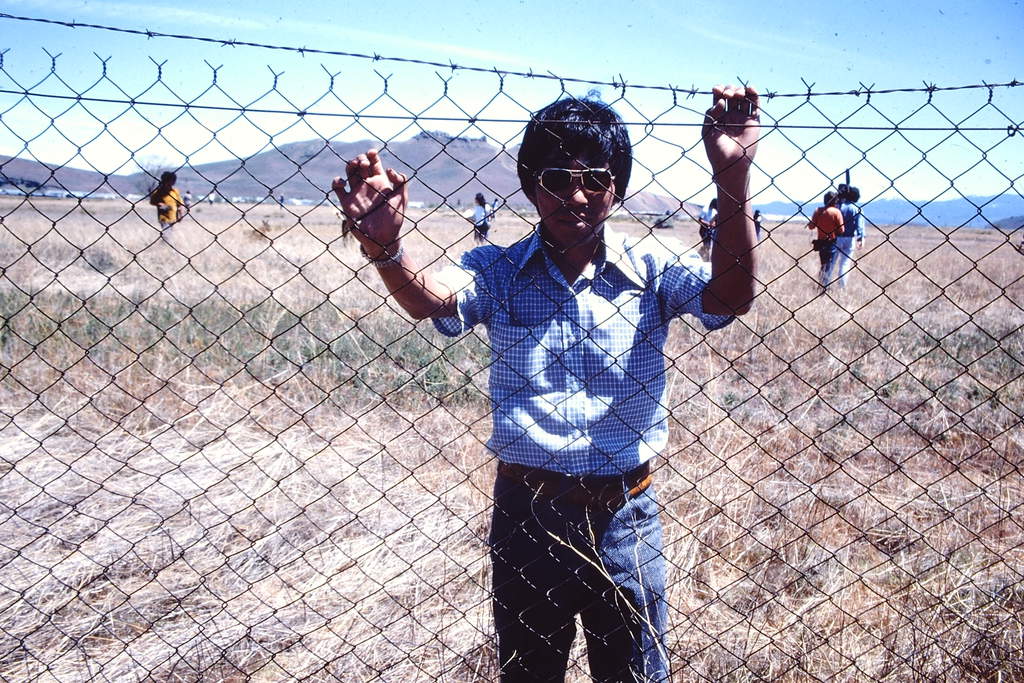October 6, 2017
In this American Archives Month guest post, Densho Digital Archivist Caitlin Oiye Coon looks at a recently published collection of photos by Gerald Kajitani. The photos document the second pilgrimage to the site of California’s Tule Lake concentration camp in 1974. Today, the site is being threatened by the proposed construction of a fence through the property. Please write to Modoc County by October 10 to let them know why you oppose the fence and support continued access to and preservation of Tule Lake, now and in the future.
Over the years, Densho has digitized many collections related to the Japanese American experience. Our Digital Repository is full of photographs, documents, and newspapers related to immigration, the community’s thriving business and farming ventures pre-war, and the the incarceration. Recently, we have had the opportunity to digitize collections that show the Japanese American community’s efforts to heal through the redress movement, day of remembrance events, and camp pilgrimages.
The Gerald Kajitani Collection consists of color slides from the 1974 Tule Lake Pilgrimage. Organized by the Northern California/Western Nevada District of the JACL, this was only the second pilgrimage to Tule Lake, the first having taken place in 1969.
Through Gerald Kajitani’s camera lens we are taken back to those early pilgrimages with long bus rides, exploration of the desolate camp sites, reflections on the past, and bonding over a shared trauma. In this collection are photos of pilgrims traveling to Tule Lake, paying respects at Linkville Cemetery, viewing artifacts, and listening to survivors tell their stories.


Looking through these photos I am struck by how similar the images are to the pilgrimages many of us participate in today. This photograph of pilgrims exploring the barracks with Castle Rock in the distance takes me back to my own pilgrimage experiences at Tule Lake in 2009 and 2012, where we gathered to explore the old stockade.

Seeing the remaining physical buildings and feeling the scope of the place allows pilgrims to establish a deep connection to the past. Is there a better way to understand history than to stand where it happened? It is important to keep this in mind as we fight to keep Modoc County from building a three-mile long fence around Tulelake Municipal Airport. This fence will cut visitors and pilgrims off from much of the old grounds, desecrating the site and cutting the Japanese American community off from their past.

The Gerald Kajitani Collection serves as a good reminder of the decades long effort to memorialize the site and the many generations of Japanese Americans who have found healing through these pilgrimages.
—
By Caitlin Oiye Coon, Densho Digital Archivist
[Header photo: Boarding the bus to the 1974 Tule Lake pilgrimage. Courtesy of the Gerald Kajitani Collection.
